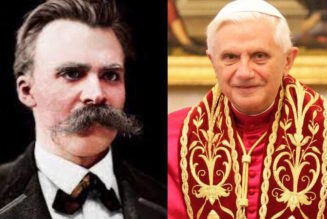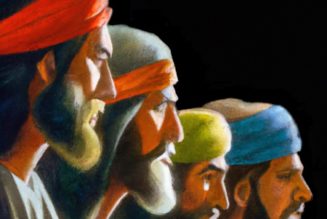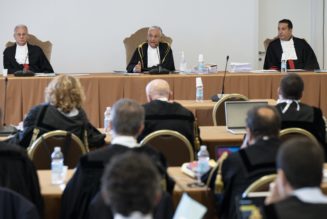The bishops of Europe – together with dozens of clerical and lay participants – met in Prague last week as part of the “continental phase” of the Synod on Synodality. A final report is expected shortly (for some preliminary indications of tone and substance, click here). Synodality is a concept that many continue to find fuzzy – and worrying. Some Synodal leaders have – paradoxically – tried to reassure the worried that we’ll find out what Synodality means in the process of holding the Synod. About that, we shall see. But by then, understanding may come too late. Because the process, in some quarters, has aroused great expectations. And great expectations, if disappointed, have often led, historically, to great upheavals. Even revolutions. Even schisms.
I’m in Rome this week researching a new book about modern Christian persecution and martyrdom, but it’s difficult not to notice various voices – some quite unexpected – here in Europe itself, that are not convinced that the synodal game, as played thus far, is worth the candle.
One thing has always been clear: the Synod on Synodality comes with sharply contradictory expectations.
On one side, which seems to be Pope Francis’s (at least on the surface), the goal is to learn to “walk together,” humbly, in a new way, consistent with tradition, but adapted to the present time, in order better to preach the Good News. That’s been a dream in the Church since John XXIII announced Vatican II over sixty years ago, with – to say the least – rather mixed results.
On the other side, the German Synodale Weg is a kind of stark Freudian Id lurking beneath the synodal surface, and not only in Germany. It has already created great expectations that we’re in a fluid moment, everything on the table: marriage, divorce, women, gays, priestly ordination, reception of the Eucharist, other sacraments. Even Jesus’ explicit words in Scripture – though Jesus and the Gospels receive little mention.
Francis has more than once expressed strong disapproval of the German Way, but by what he’s done and failed to do, intentionally or not, he has somewhat encouraged both Germans and those elsewhere of like mind. Despite some warm and fuzzy crowing that the past week demonstrated respectful dialogue among different groups – remarks that could have been written before the event – all the talk hasn’t changed very much.
LGBT “inclusion,” for instance, is a test case. The Church’s core mission – to preach the Gospel to all nations – is faltering. And in no small number of countries, both developed and undeveloped, the Faith encounters opposition and – under various guises – persecution.
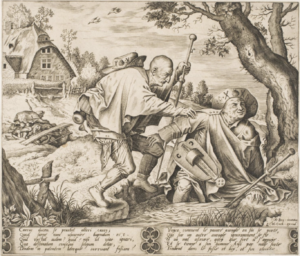
Are questions about a small percentage of sexual minorities (before the trans craze, consistently 3-4 percent) so important that, as one European bishop objected, they appear “on every other page” of the draft report? Especially given the fact that only a small percentage of that already small percentage will have any interest in the Church, whatever the Synod produces? One paragraph, said the good bishop, would seem to suffice.
He’s absolutely right, of course, but he’s a Latin-rite Ukrainian, perhaps unaware that, like the subject of racism for many in Western media, LGBT matters have become central for some in the Church – everywhere, in all circumstances, all the time. As is the accusation that the Church is obsessed with sex.
Meanwhile, the very category “LGBT,” a recent invention (not even internally consistent because of splits over “trans”), involves moral matters consistently taught for 2000 years in Christianity, and several centuries before that in Judaism.
Numbers are not everything, of course. And we have a duty to do justice – real justice – to everyone, which requires telling the truth. French Catholic philosopher Rémi Brague, winner of the Ratzinger Prize, argues in a book just published in Paris this weekend, that terms like “islamophobia” have been “weaponized” to stop people from talking about obvious Muslim problems in France.
In similar fashion, throughout our Western societies, pseudo-medical terms like “homophobia” and “transphobia” have materialized out of thin air, and are utilized as if the vast majority of peoples and cultures throughout history, and many today, who have objections to the artificially concocted category “LGBT” – let alone the militant LGBT agenda – are emotionally ill, if not simply evil.
In the Church, this secular ideology has (mostly) taken the less aggressive form of deploring a lack of “inclusion.” But it’s hard to miss the implication that traditional believers – and the tradition itself – are either psychologically rigid or resisting the Holy Spirit.
By what standards is all this to be assessed? Archbishop Charles Chaput along with many authoritative figures rightly says, by reference to Jesus, not to culturally dominant ways of thinking at the moment.
A common complaint against Catholicism for centuries was that scholastic philosophy, with its many distinctions and subdivisions, was overly fussy. No scholastic known to history ever asked, “How many angels can dance on the head of a pin?” But it’s true that in the hands of figures less gifted than an Aquinas or Bonaventure, scholasticism could degenerate into hair-splitting.
The hairsplitting has now morphed into tortured social analysis about “implicit bias,” “microaggressions,” and – in the Church – wispy claims of “exclusion,” patriarchy, clericalism, rigidness, etc., as if the Church were guilty by the mere fact of maintaining her own structures and standards. And for saying what the Church actually believes and teaches.
Jesus never rejected anyone, we’re often told now. True, but plenty of people rejected Him – which is really the point. You can replace Scripture and tradition with post-modern psychology and sociology, but you may forget that He warned that rejecting Him and his teaching can one day lead to permanent separation, “When the Son of Man comes in his glory, and all the angels with him, he will sit on his glorious throne. All the nations will be gathered before him, and he will separate the people one from another as a shepherd separates the sheep from the goats. He will put the sheep on his right and the goats on his left.”
*Image: The Blind Leading the Blind by Pieter van der Heyden , c. 1551-1570 [Philadelphia Museum of Art]
You may also enjoy:
Robert Royal’s The Sciences and Homophiliac Synodality
Stephen P. White’s Synodality Is What You Make of It
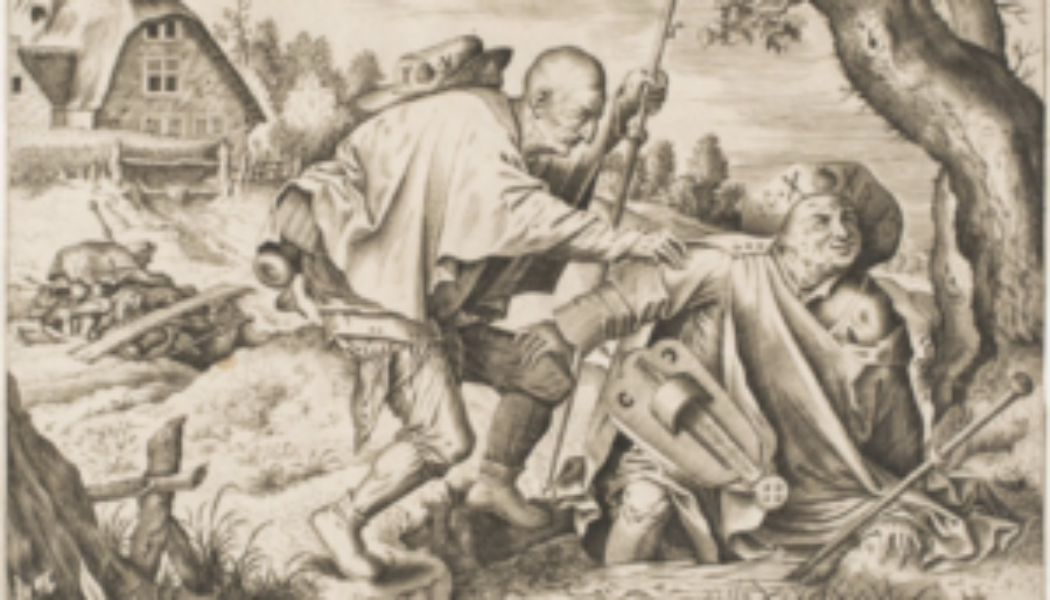

![Following UK Prime Minister Boris Johnson’s Catholic wedding, the task of announcing new Anglican bishops will fall to someone else [London Times paywall]…](https://salvationprosperity.net/wp-content/uploads/2021/06/following-uk-prime-minister-boris-johnsons-catholic-wedding-the-task-of-announcing-new-anglican-bishops-will-fall-to-someone-else-london-times-paywall-scaled-327x219.jpg)

